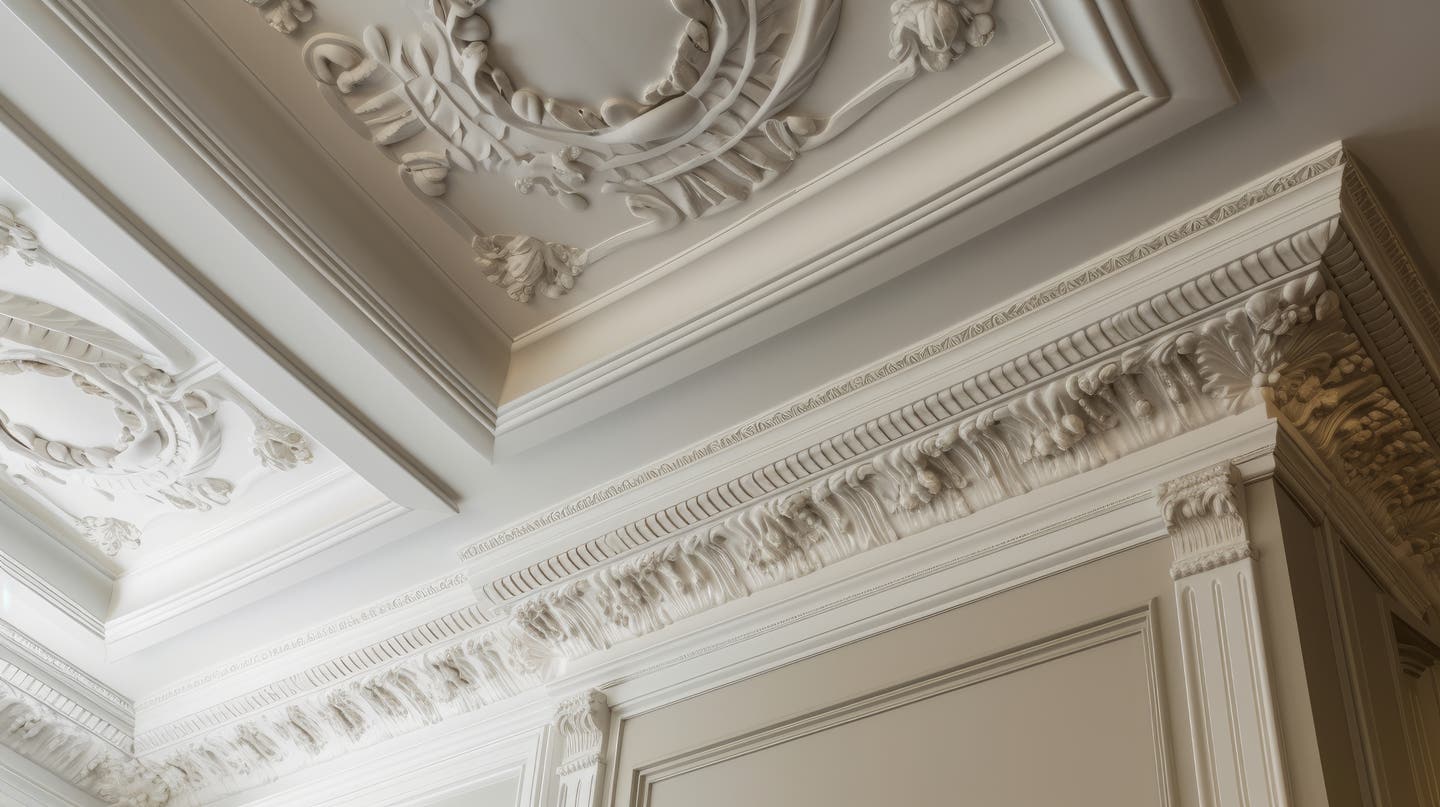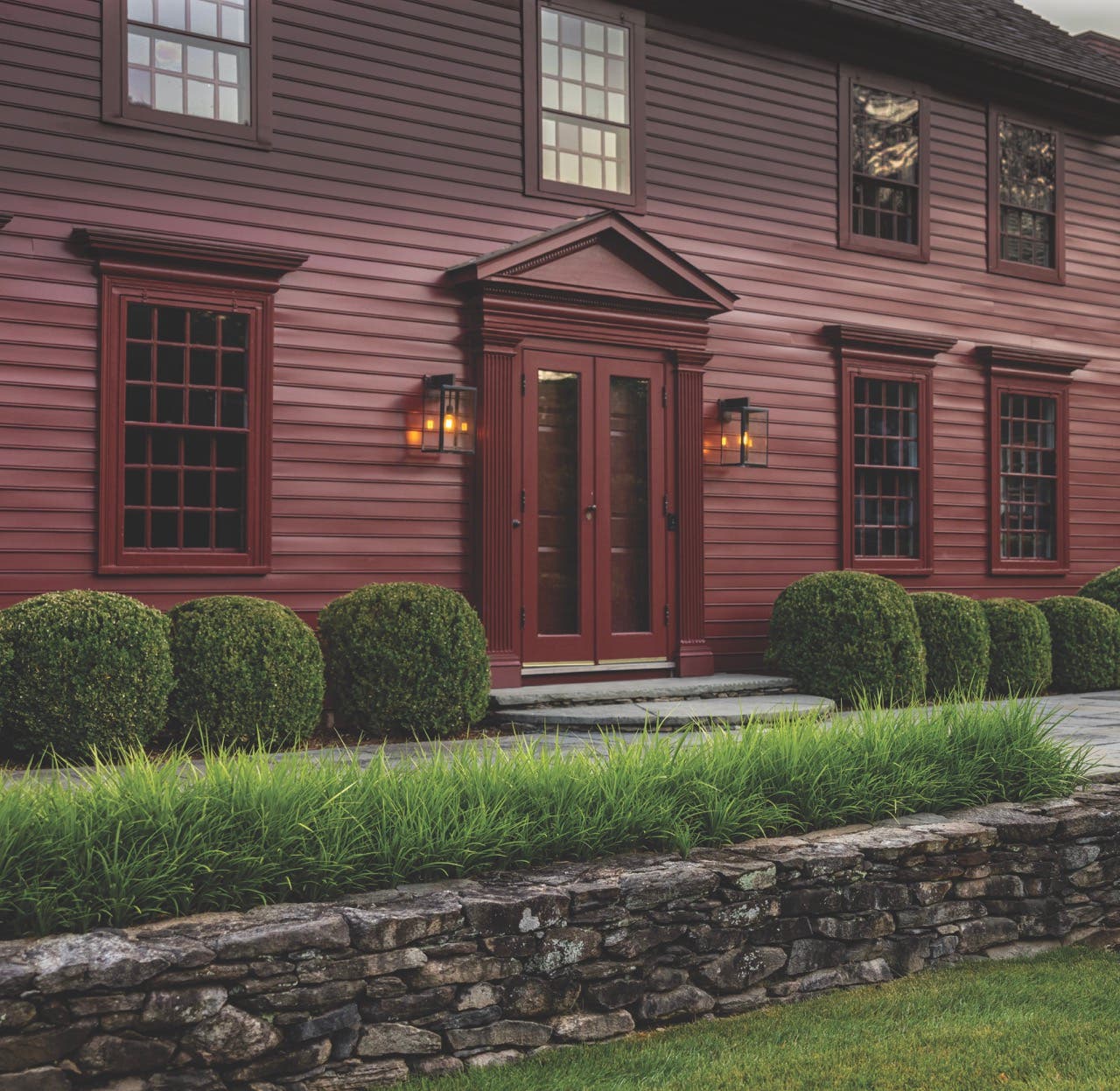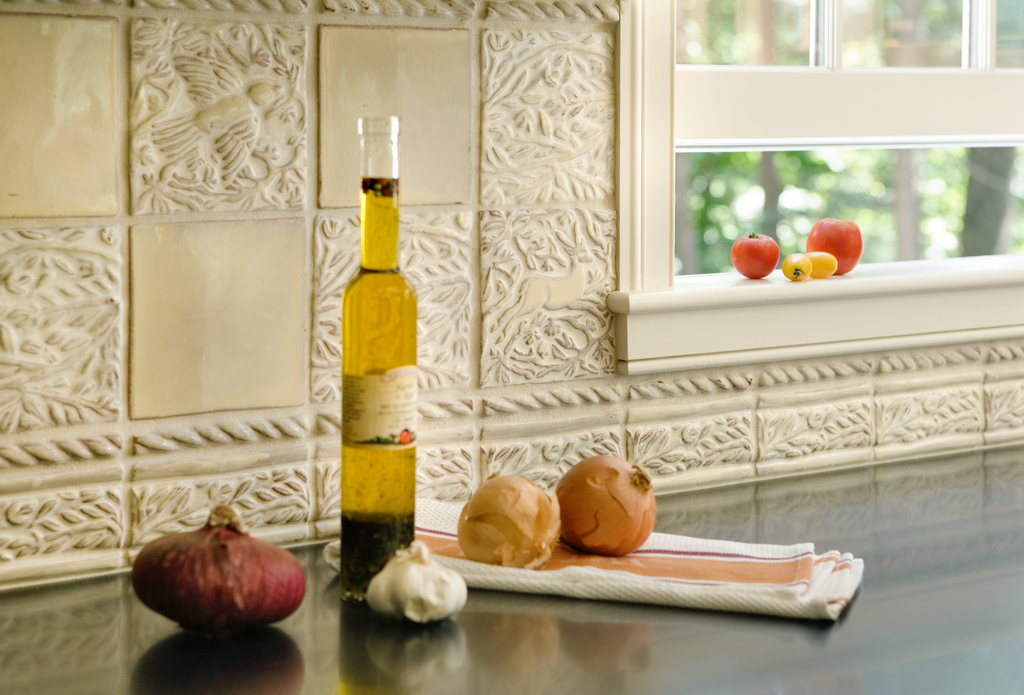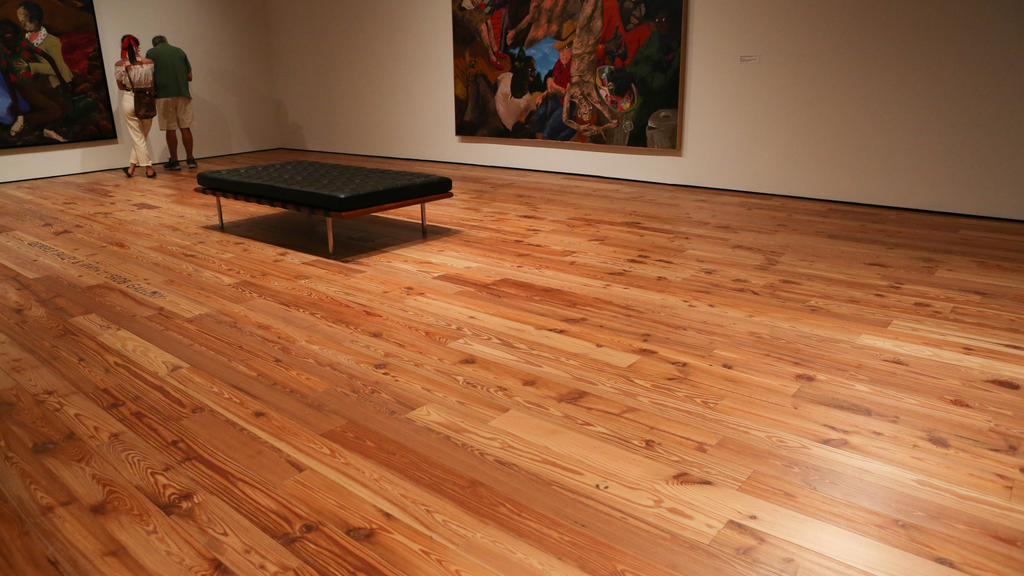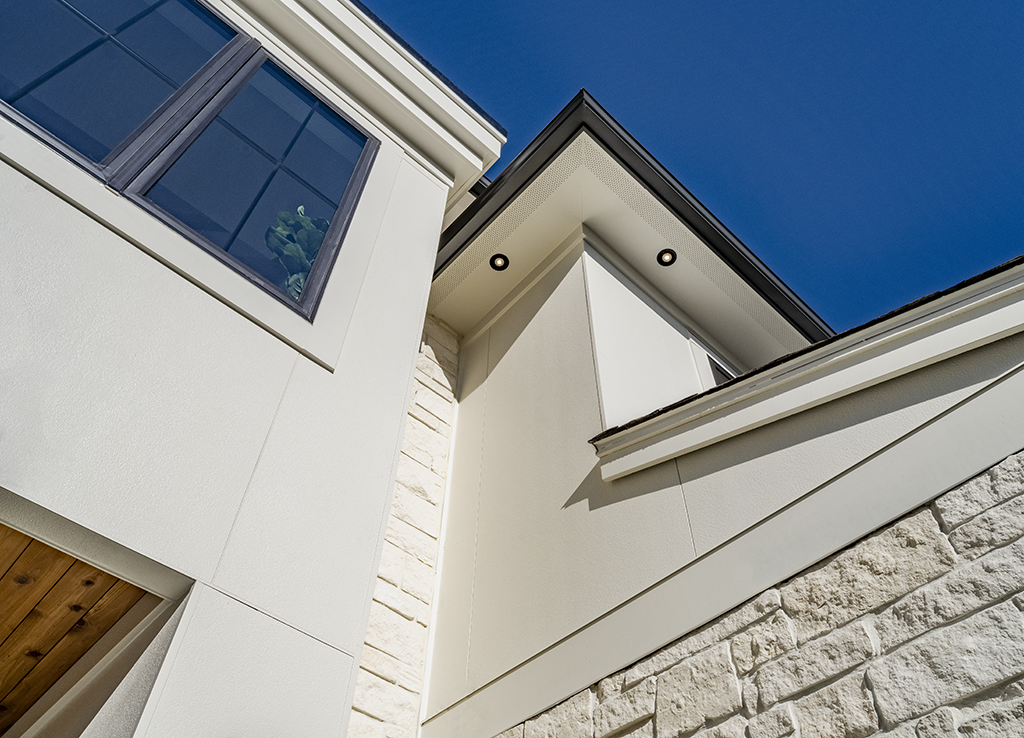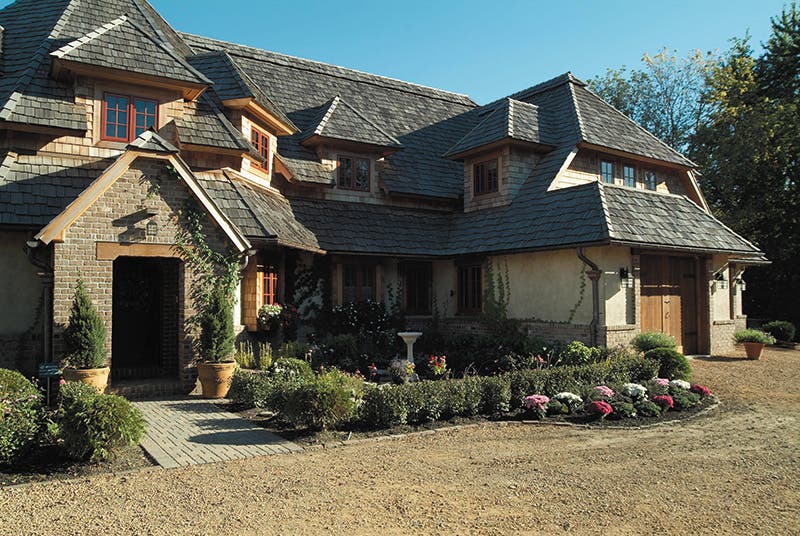
Roofing
Wood Roofing: Beautiful & Practical
When builder Jerry Boldenow of Orono, MN, designed and built his own 5,000-sq.ft. dream home, he never considered anything other than a wood roof for the 17th-century-English-style cottage. “We design and build high-end homes and we use only wood roofing on them,” says Boldenow. “Wood is more traditional looking.”
Its appearance is not its only asset, however. “There is a growing interest in wood roofing,” says Lynne Christensen, director of operations for the Cedar Shake & Shingle Bureau of Sumas, WA, “especially the newer pre-finished and pre-primed products, including the advent of pressure impregnated treated products that increase the life span of the wood roof and those that offer fire-retardant qualities.”
Founded in 1915, the Cedar Bureau represents manufacturers, distributors and installers of cedar shake and shingle roofing and siding, including western red cedar, by far the most popular species, and also yellow cedar. With more than 100 manufacturers, almost 70 distributors and nearly 140 approved installers on its membership roster, the Cedar Bureau requires its manufacturing members to participate in a quality-control process that involves inspections by a full-time staff auditor and by separate third-party inspectors in order to use its Certi-label brand.
The Cedar Bureau emphasizes the advantages of cedar for roofing and for siding. “Cedar is naturally decay resistant. People like it for its light weight and that it is environmentally friendly,” says Christensen. “Many alternatives are made from minerals, rocks and petroleum-based products that are not renewable resources.” Other advantages she cites for wood roofing include its wind- and impact-resistant and insulating properties. In addition, the Cedar Bureau points out that wood is not subject to freeze-thaw cycles, will not delaminate and will weather into a nice gray color.
Appearance does, however, serve the product: The main reason people use it is its look, and, on high-end homes, they are not deterred by its higher cost – a shake roof generally costs twice as much as an architectural shingle roof, according to Matt Wilkinson, owner of Cedar Roofing Co. in Lake Forest, IL. But “upscale neighborhoods like wood,” says Tony Romberg, owner of Premium Shingle Co., a mill in Beaver, WA, “because many of the homes were designed for that look.” Wilkinson agrees. “People like the natural beauty of a wood roof. It looks great with certain styles of homes, such as those with stone siding. There’s a lot of call for it.”
While the life span of other roofing products is generally longer, says Wilkinson, “you can get a 25- to 30-year life span if you go to a high-end premium [treated] product. It increases the life of the roof by 25 to 30%.”
Christensen adds, “Typically the life span of a wood roof ranges from 20 to 50 years, depending on factors such as the quality of the product and the installation. You also need maintenance. For example, if you have overhanging trees, you need to keep the roof swept clean so debris doesn’t build up.”
Shakes and Shingles
Shingles and shakes are often thought of as hard to differentiate, but in fact are recognizably different. According to the Cedar Bureau, the former is sawn on both sides for a smooth finish and is available in 16-, 18- and 24-in. lengths. Manufacturers offer a wide range of fancy-butt shingles, including a semi-round shape known as the fish scale; a pointed butt to provide a diamond-shaped finish and arrow, half-cove, hexagonal, octagonal and diagonal shapes. These are recommended for sidewall applications where a decorative appearance is desired. Standard red cedar shingles, on the other hand, provide a tailored appearance for the roof.
Shakes are available in two basic types, says Christensen. The first is hand-split and resawn. It is split from the wood block on one side and sawn on the back to provide a more rustic appearance. These are available in three butt thicknesses: ½-in. (medium), ¾-in. (heavy) and 1-in. (jumbo) and are available in 18- and 24-in. lengths, although specialty or custom shake products come in lengths up to 36 in.
The second type of shake is taper sawn, which is sawn on both sides for a smooth appearance. It is typically thicker than a shingle and provides a heavier shadow line. These are generally available in 5/8- and 7/8-in. butt thicknesses and 18- and 24-in. lengths.
Shakes and shingles are also available in various grades. “There are more than 100 different products,” says Christensen. “The selection depends on where the house is and its style. A rancher-style home or vacation mountain-side cabin, for example, would likely use a more rustic looking hand-split and resawn shake, but a city home where owners seek a more tailored look would probably want a taper-sawn shake or shingle.”
Applications
The 5,000-sq.ft. Boldenow home in Orono, MN, is a typical example of a high-end home with a cedar shake roof. The 14/12 hand-framed wood roof is made of medium hand-split cedar shakes supplied by ABC Supply of Minneapolis, MN. Kurt Rusch of Minnetonka, MN, installed the roof, including the copper flashings, throughout a period of approximately five months. “The hand-split shake makes it a little heavier looking,” says Boldenow.
While wood roofing is often associated with high-end homes, it has also been successfully used on other applications. One example is Bayview, a village of 55 homes in the retirement community of Port Ludlow, WA. When the owners realized they needed to replace the original roofing, they were initially told that high-quality shakes were no longer available. A bit of research and contact with the Cedar Bureau turned up quite different information. Four of the homeowners have now re-roofed using heavy 7/8-in. premium, old-growth hand-split shakes supplied by Premium Shingle Co. “Shakes make a beautiful roof and they are also practical,” says homeowner Loren Kragh. “The aesthetics of shakes, the heavy shadow lines and the natural quality are superior to man-made materials. Shakes complement Northwest architecture, which emphasizes colors and textures found in nature. More simply put,” he adds, “we used the need to re-roof as an opportunity to substantially upgrade our homes with premium heavy shakes.”
Martha McDonald is the editor of Traditional Building Magazine.




